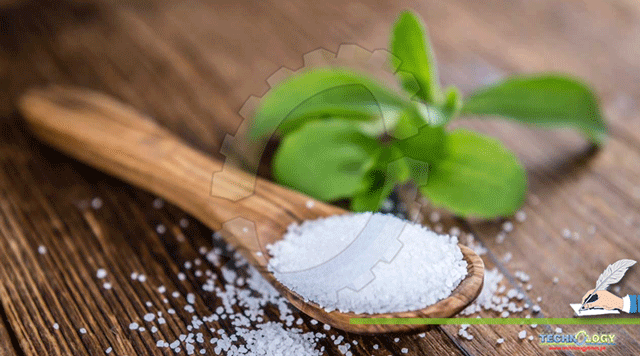Stevia is a natural sugar alternative that is extracted from the leaves of a bushy shrub, Stevia rebaudiana.

By Jahangir Ahmed and Muhammad Alamgeer
The plant is indigenous to Paraguay, South America. Stevia is mainly cultivated in Paraguay, Japan, Brazil, and China. In South America and Asia, stevia leaves have historically been utilized to sweeten beverages like tea. These leaves have also been used for ages as a herbal medicine to treat high blood sugar. Steviol glycoside molecules, which are 250–300 times sweeter than ordinary sugar, are the actual source of the sweetness of the leaves. Stevia is predicted to be a substantial source of high-potency sweeteners because of its growing popularity in many parts of the world.
The glycosides must be removed from the leaves to produce stevia sweeteners. Dry leaves are soaked in water as part of the process and then the water is filtered to remove the leaf particles. After that, activated carbon is used to remove organic matter from the liquid. Using an ion exchange approach, minerals and metals are separated from the fluid. The glycosides are then condensed into a resin. What’s left is concentrated stevia leaf extract that has been dried using a spray gun and is ready to be transformed into sweeteners. To sweeten food or beverages, the extract is typically provided as either a highly concentrated liquid or in single-serve sachets. There are various sugar substitutes made from stevia. These products have the same volume and sweetening power as sugar but none of the calories or carbs.
Stevia is practically calorie and carbohydrate-free. The modest amounts utilized add no significant calories or carbohydrates to your food because it is so much sweeter than regular sugar. Even though stevia leaves contain several vitamins and minerals, most of them are lost during the plant’s processing into a sweetener. Additionally, vitamin levels may differ since some stevia products include extra substances.
For centuries, stevia leaves have been used medicinally, and research on animals has shown that the extract lowers blood sugar and fat levels. Stevia could aid in weight loss when it is used as a substitute for normal sugar because it is calorie-free. Stevia also aids in maintaining satiety while using fewer calories. Stevia has been tested in animal experiments to increase insulin sensitivity, the hormone that reduces blood sugar by enabling it into cells to be used for energy.
Stevia is now widely utilized in food production and home cooking as a sugar substitute. But stevia’s bitter aftertaste is one of its main drawbacks. To overcome this, food scientists are researching novel techniques for extracting and processing stevia. Additionally, during cooking, sugar goes through a special process known as the Maillard reaction, which enables foods that contain sugar to caramelize and turn golden brown. Sugar gives baked foods structure and volume. It’s possible that stevia won’t provide baked items the same appearance or texture as sugar when sugar is totally substituted. Despite these drawbacks, stevia functions effectively as a sugar substitute in the majority of meals and beverages, though a sugar-stevia mixture is typically preferred in terms of taste.
Despite the potential advantages, stevia also has drawbacks. It is still a highly refined product amidst being plant-based and appearing more natural than other zero-calorie sweeteners. Maltodextrin, a filler frequently added to stevia blends, has been associated with the dysregulation of beneficial gut bacteria. Your gut microbes may potentially be harmed by stevia itself. Stevia is regarded as an aggressive sweetener because it is so much sweeter than sugar. According to several studies, high sweeteners may boost the desire for sweet foods. In addition, even though stevia and other zero-calorie sweeteners don’t increase the sugar level of blood, their sweet flavor may still trigger an insulin response.

Author Names: Jahangir Ahmed and Muhammad Alamgeer